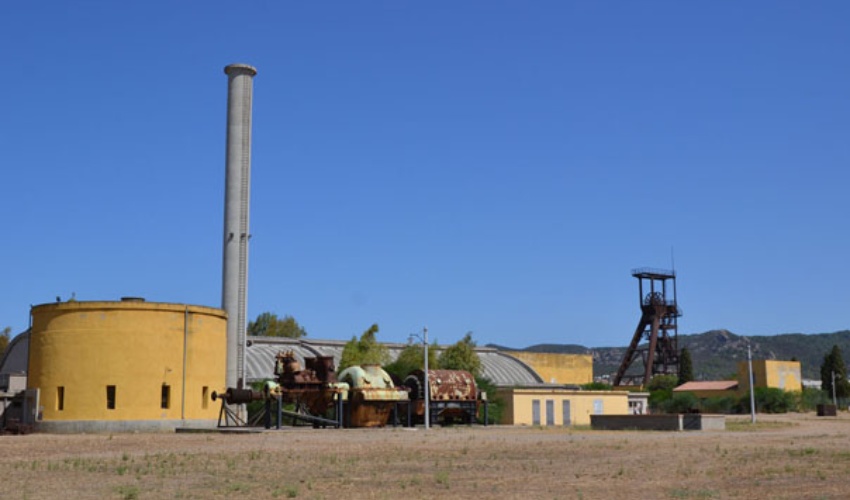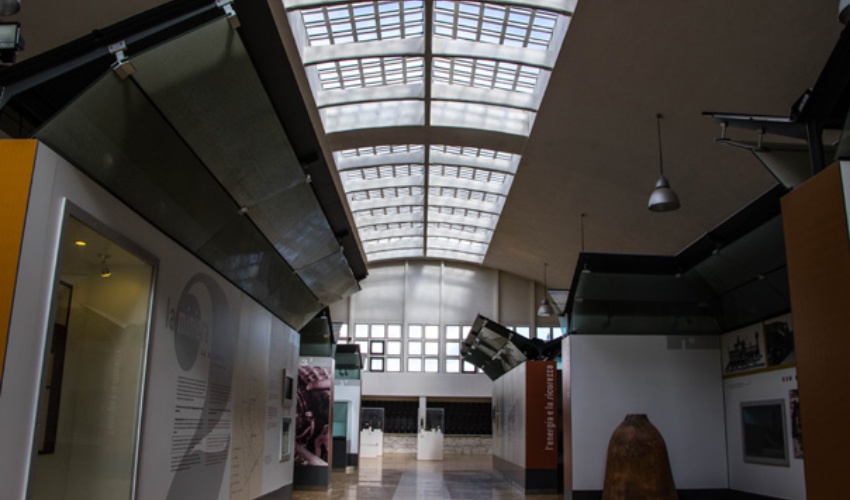Headquarter
Sotacarbo Research Centre is located in the area of the Serbariu mine in Carbonia, in the former Materials Warehouse building. It includes offices, research laboratories, experimental facilities of the Pilot Platform, the workshop, the auditorium and showrooms.
On May 17, 2008, the Sotacarbo Research Centre, which was established by Sotacarbo and the Municipality of Carbonia, was officially inaugurated.
The Centre, located at the Serbariu mine in Carbonia, has a covered area of about 2500 square metres (including 1430 for laboratories, offices, archives, technological services and about 300 to be used for assembling components of small experimental plants) and an open area of about 10000 square metres (including the experimental installations, the green area and parking lots).
In particular, the covered area of the Centre is functionally divided into three main blocks:
- a first block consisting of offices, laboratories, archives and meeting rooms.
- a second block includes the area for assembly of components of experimental plants and the premises dedicated to technological installations, pilot platform auxiliary systems and electrical cabin.
- A third block comprises areas open to the public (a conference room, an exhibition area and ancillary service facilities).
The Sotacarbo Research Centre was originally housed in a Materials Warehouse building. It was built between 1938 and 1939 and then expanded in the fifties with three bays of new warehouses. The Warehouse consists of a main façade in trachyte face to view, with a large iron portal that leads into a wide corridor leading to the original internal courtyard (which now houses the conference room). The main façade of this court, the one in which there is the exit, is made of trachyte masonry face to view. The two side fronts are instead made with only trachyte plinting and with the same scanning of the windows of the external fronts.
A historic coal mine. The nucleus of Carbonia was established on these 22 hectares in the thirties. But the initial parable of the Serbariu mine did not follow that of those who wanted it opened.
In the years following Italy's entry into the war, the mine at Serbariu was modernized to increase its production levels to four million tons in just a few years. An enormity for those times. To this end, five kilometres of tunnels served by modern ventilation systems were dug and the mine was equipped with two direct wells, with a large power plant, a modern laveria, connected by a functional and then, modern railway line that connected it strategically to the port of Sant'Antioco and the rest of the Sulcis-Iglesiente.
The massive modernization work did not prevent tragedies, such as that which on 14 February 1938 caused the death of five miners due to the uncontrolled presence of water masses in the deepest levels of the mine. Despite this, the production growth of the mine continued exponentially: within six years, from 1940 to 1946, the number of workers employed rose from 3000 to 11000. A unique and rare case of Italian production activity capable of recording, in the years of the Second World War, the highest peaks of activity, reaching its peak coinciding with the defeat of Italy and the fascist regime.
The end of what was intended to be a reference point for the post-war period began at that moment. The birth of the industrial centre of Portovesme at the end of the 1950s, combined with the inability to maintain a competitive price for the production of Sulcis coal, led in 1971 to the closure of the mine, which would follow, not by chance, a few years after that of the Railways of Sulcis. A sad conclusion for some of the most brilliant pages in Sulcian history.
The project for the recovery and valorization of the site includes the use of the different buildings as permanent locations of cultural, scientific, academic and craft activities.
Modern uses of buildings dating back to the thirties, preserved and restored in the most faithful way to the architecture of the time, through the general arrangement of the area and in particular of the mining castles, winches, machine rooms of the wells, Storage, thermal power plant, refrigeration tower and raw coal silos.
The conversion, still in progress, has made available the buildings and mining structures that today constitute the Coal Museum, the PAS Paleoambienti Sulcitani E.A.Martel Museum, the Local History Documentation Centre, the Sotacarbo Research Centre, the Ex-Di' - Cinema Factory, an auditorium with adjoining rooms for high university education, a restaurant and some craft workshops.


